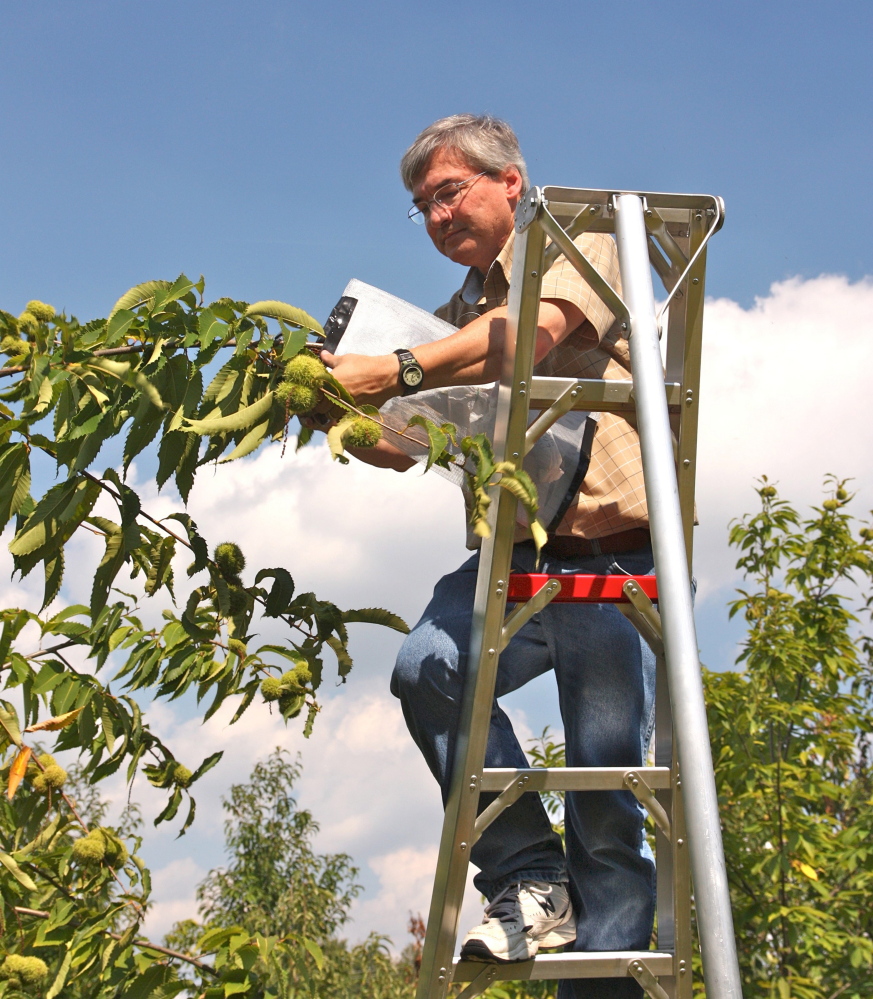Nearly 400 years ago the Pilgrims sat down with the Wampanoag to share the feast immortalized as Thanksgiving. We don’t know the exact menu. According to Kathleen Wall, foodways culinarian at Plimoth Plantation, venison, fowl and corn were documented by attendees, but, beyond that, we can only speculate. I asked if we could speculate about chestnuts.
“We can’t say for sure, but the odds are pretty good,” she says. “They’re right in season. Both cultures knew them and used them.”
Susan Freinkel, in her excellent book “American Chestnut: The Life, Death and Rebirth of a Perfect Tree,” describes how, in the fall, when the nuts were sometimes inches deep on the ground, families used to gather them for their own use and to sell. Livestock was let loose to forage for them. People who didn’t eat chestnuts often ate chestnut-fed venison or squirrel. Furniture, fence posts and utility poles were made of the long, straight, rot-resistant timber. In some places, one in four forest trees was a chestnut, and the tallest stood 12 stories high.
Then a fungus killed almost all of them. The chestnut blight was first spotted in 1904 and is believed to have arrived here in Asian chestnut trees, which have some resistance to it. American chestnuts have none, and all but a few hundred of the 3 billion to 4 billion trees were wiped out in just a couple of decades.
Three to 4 billion. It’s hard to get your arms around a number that big, so let’s convert it to something useful: food. A mature tree can produce several hundred pounds of nuts (the record is more than 1,000 pounds); about 70 percent of that weight is actual nutmeat. For the sake of being conservative and working with round numbers, let’s call it 100 pounds of nutmeat per tree, at about 1,000 calories per pound, or 100,000 calories per tree. So 10 trees would provide the million calories (give or take) one person eats in a year.
Here’s what that means: If we still had those 3 billion to 4 billion trees, they would meet 100 percent of the caloric needs of today’s entire American population of just over 300 million. They could feed every last one of us.
A readily available supply of high-quality, good-tasting food, growing out there in the woods, might put it in more people’s grasp. Thanks to a group of scientists at the State University of New York College of Environmental Science and Forestry, headed by Bill Powell and Chuck Maynard, it could happen. On Nov. 4, they announced that they had bred a blight-resistant American chestnut by introducing a gene from wheat. Inserting that single gene into the American chestnut genome made the tree resistant.
The gene that might save the American chestnut wasn’t created for personal profit or for the benefit of corporations or farmers. It’s intended solely for the public good.
Send questions/comments to the editors.



Success. Please wait for the page to reload. If the page does not reload within 5 seconds, please refresh the page.
Enter your email and password to access comments.
Hi, to comment on stories you must . This profile is in addition to your subscription and website login.
Already have a commenting profile? .
Invalid username/password.
Please check your email to confirm and complete your registration.
Only subscribers are eligible to post comments. Please subscribe or login first for digital access. Here’s why.
Use the form below to reset your password. When you've submitted your account email, we will send an email with a reset code.